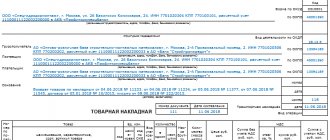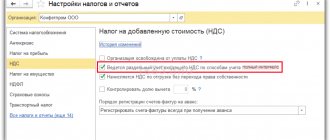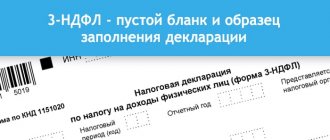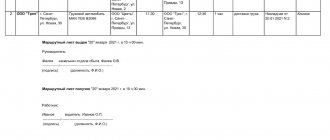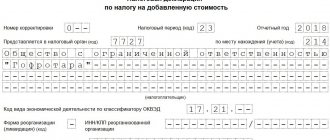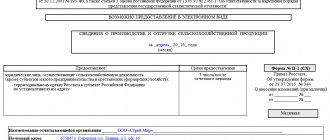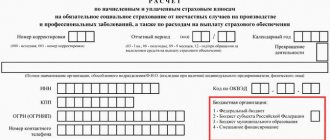What to follow
The current form 3-TORG (PM) was approved along with some other statistical forms by Rosstat order No. 388 dated August 4, 2016 (Appendix No. 7). The same document contains mandatory instructions for filling out 3-TORG (PM).
You can download form 3-TORG (PM) for free to fill out using the following direct link:
“Form form 3-bargaining (pm).”
What applies to wholesale trade?
Wholesale trade for the purpose of filling out the main indicator in line 01 of the PM-trading form is considered to be:
- the cost of goods shipped with the obligatory completion of an invoice;
- proceeds from goods sold purchased for subsequent sale to legal entities and individual entrepreneurs for further use or resale;
- if the turnover includes the sales price with a markup, VAT, excise tax, customs duty, and all mandatory payments;
- for commission agents (agents) - remuneration if they carry out activities in the interests of another person (principal, principal) is reflected with value added tax at the actual cost;
- for principals - the turnover of trade carried out by the principal (principal) on the basis of commission agreements or agency agreements is indicated at the cost of goods sold.
Turnover on line 01 is indicated in thousands of rubles with one decimal place after the decimal point.
The following is not considered a wholesale sale for the purpose of completing this statistical report:
- sales of products to the public, since this is retail trade;
- revenue from the sale of fuel cards, telephone cards, communication services, as well as from the sale of lottery tickets;
- the cost of utilities provided to the population and enterprises (gas, water supply, electricity).
***
Statistical reporting in the PM-torg form is mandatory for small wholesale businesses (except micro-enterprises). Retail trade organizations do not submit this report. When completing the main indicator, you must include turnover, which is considered wholesale only for the purpose of completing this report form. This information is submitted to Rosstat monthly on the 4th of the previous month.
The Federal State Statistics Service collects information on the turnover of small enterprises engaged in wholesale trade. To collect such information, Rosstat Order No. 321 dated July 16, 2015 (as amended on August 28, 2017) approved the monthly PM-torg form. Data is filled in for the organization as a whole, that is, for all “isolations” (branches and structural divisions), regardless of their location.
PM-trading – who submits this report? This form is submitted by all legal entities - small businesses (with the exception of micro-enterprises) engaged in wholesale trade. provide information on trade turnover on a general basis. If the organization is temporarily not operating, but trade was still carried out for part of the reporting period, it is necessary to submit information about turnover in the general manner (indicating the date of suspension of activity).
PM-bargaining – due date: until the 4th day of the month following the reporting month (inclusive). The organization fills out the current form for providing information and submits it to the territorial body of Rosstat at its location. If the activity is not carried out at the location, then the form must be submitted to the place where the activity is actually carried out.
Rules: how to fill out 3-TORG (PM)
First, a general approach on how to fill out form 3-TORG (PM). They do this:
- based on the cumulative total principle;
- as a whole for the trading enterprise, taking into account “special features”.
In addition, the procedure for filling out 3-TORG (PM) has some features depending on who exactly is engaged in retail sales (see table below).
| Features of filling out 3-TORG (PM) | |
| Retail trade entity | Filling Features |
| Simple partnership (joint activity agreement) | The cost of goods sold by comrades is distributed according to the value of their contributions to the common cause (the form is filled out by each of them). A different procedure may be prescribed by the partnership agreement or another agreement. If the cost of goods cannot be distributed among the partners, then the form is handed over for everyone by the partner who keeps records of the common property. |
| Legal entities - commission agents/attorneys/agents - in retail trade in the interests of another person under commission/mandate/agency agreements | Shows the actual cost of goods sold to the public |
| Principals, principals, principals – owners of goods | Form 3-TORG (PM) is not filled out, since the relevant data is provided by a company (usually a commission agent) that directly sells goods to the public |
According to the procedure for filling out 3-TORG (PM) in 2021, this form must indicate the actual postal address if it does not coincide with the legal one. And the OKPO code is taken from the notification of its assignment from the local Rosstat authority.
Also see “3-TORG (PM) in 2021.”
Section 1
First of all, the procedure for filling out form 3-TORG (PM) requires showing retail trade turnover:
- for the quarter;
- for the same quarter last year.
We are talking about revenue from the sale of goods to the public for personal consumption or home use for cash or paid for in other ways.
Thus, retail turnover includes the full cost of:
- goods sold to the public on credit;
- medicines dispensed to certain categories of citizens free of charge or on preferential prescriptions;
- coal;
- gas in cylinders;
- wood fuel;
- other goods sold to certain categories of the population at a discount.
The cost of goods sold through the retail trade network is not included in retail turnover:
- legal entities (including social organizations, special consumers, etc.);
- to businessmen.
A mandatory feature of a retail transaction is the presence of a cash receipt (invoice) or other document replacing the receipt.
The current rules for filling out 3-TORG (PM) indicate that the retail price includes:
- trade margin;
- VAT;
- similar mandatory payments.
For the purposes of line 03, Internet trading is the sale of goods based on orders from buyers received online, where the price and/or terms of sale are accepted or negotiated over the Internet, e-mail, etc., regardless of the form calculation and method of delivery of goods.
The cost of goods sold through online stores is determined by the time of invoice issuance or delivery to the buyer. That is, the moment the buyer actually pays for the goods does not play a role.
Mail order (page 04) is the retail sale of any product through mail orders. They are selected from advertisements, catalogues, samples or other types of advertising.
Inventories of goods purchased externally and intended for sale to the public (page “05”) are valued at the average selling prices for similar goods that were in effect in the reporting quarter and the corresponding quarter of the previous year. That is, on the balance sheet they are accounted for at the acquisition price, and on line 05 - at average prices.
In addition, data on inventories of goods is provided for all places of their storage, including rented ones:
- warehouses;
- cold storage warehouses;
- in shops.
Goods accepted from the population on commission are not included in the volume of inventories.
Companies - commission agents, attorneys and agents, when acting in the interests of another person, do not fill out line 05. This is done for them by the owners of the goods - principals, principals, principals.
Section 2
In part of Section 2, filling out 3-TORG (PM) statistics implies a detailed decoding of the data in line 01 of Section 1.
| How to fill in individual lines | |
| Line no. | What to indicate |
| 06 | Fresh, chilled, frozen or canned meat of animals, poultry Meat products and canned food Game meat By-products from animal meat, poultry, game |
| 07 | Beef, pork, veal, lamb, goat meat, horse meat, rabbit meat and other types of animal meat. Please note: sales and inventories of meat by-products are reflected only on line 06 |
| 08 | Meat of chickens, chickens, guinea fowl, geese, ducks, turkeys and other poultry. Please note: sales and inventories of poultry by-products are reflected on line 06 |
| 09 | Meat and poultry products: · boiled, semi-smoked, hard smoked and other sausages; · sausages and sausages; · smoked meats; · meat snacks; · semi-finished products (meat cutlets, meat and vegetable cutlets and with other fillings, dumplings, pancakes and pies with meat, meatballs, minced meat, etc.); · quick-frozen semi-finished products (with and without garnish); · culinary products from meat, including home-made; · meat bouillon cubes. |
| 11 | Live fish, chilled, frozen, salted, spicy salted, marinated, smoked, dried, dried, balyk products, caviar (by weight and in jars), crustaceans, shellfish and other seafood, canned fish in oil, tomato sauce, natural canned fish, fish vegetables canned food, preserved fish from herring, sprat, mackerel and other types of fish and seafood. |
| 13 | Animal and vegetable oils, margarine products, mayonnaise, mayonnaise sauces. |
| 14 | Butter (salted, unsalted, Vologda, amateur, peasant, dietary, etc.), ghee, butter with fillers (cheese, chocolate, etc.). |
| 15 | Refined and unrefined vegetable oils: sunflower, peanut, mustard, soybean, corn, sesame, flaxseed, olive, rapeseed, salad, etc. |
| 16 | Margarine products (milk, cream, dairy-free margarine, confectionery and cooking fat) |
| 17 | Drinking milk, milk drinks without fillers and with fillers, fermented milk products and drinks (yogurt, fermented baked milk, kefir, yogurt, kumiss, etc.), cream, sour cream, cottage cheese, curd cheeses, curd mass, curd semi-finished products (dumplings, cheesecakes, etc.), cheeses, canned milk, freeze-dried canned milk powder, condensed and concentrated milk. |
| 18 | Drinking milk, whole, bottled, pasteurized, sterilized |
| 19 | Pasteurized, sterilized milk drinks (reconstituted milk), made from whole cow's milk powder, without fillers |
| 23 | Sugar, powdered sugar, xylitol, sorbitol, other sweeteners |
| 24 | Flour and sugar confectionery products |
| 25 | Tea, coffee, cocoa, as well as herbal teas, children's teas, coffee drinks, capsules for coffee machines, chicory (with and without additives), tea and coffee gift sets (with cups, spoons, candies, etc.) |
| 28 | Flour, flour product concentrates for making cakes, pastries, muffins, cookies, buns, pies, dumplings and other flour dishes, as well as baby flour nutritional mixtures |
| 29 | Cereals, as well as porridges for baby food, infant formula based on cereal decoctions |
| 31 | Bakery products (bread of all types, bakery, bagel products, pies, pies, donuts, etc.), as well as crackers, croutons, crispbread |
| 35 | Alcoholic drinks, including beer and beer drinks |
| 36 | Vegetable and fruit juices, mineral water, bottled drinking water and other non-alcoholic drinks |
| 38 | Chewing gum, food additives, dietary supplements, herbs, spices and other food products not included in other lines |
| 40 | Cosmetic and perfumery products, except soap |
| 42 | Refrigerators and freezers, dishwashers, household washers and dryers, household cooking and heating equipment, sewing machines, vacuum cleaners and other electrical household appliances |
| 45 | Audio equipment, televisions, video recorders, video cameras, home theaters |
| 46 | Audio equipment, which includes tape recorders, tape recorders, decks, stereos, players, radios, tuners, amplifiers, equalizers, speakers, voice recorders, car audio equipment, players with a laser optical reading system for CDs, record players. |
| 47 | Plasma, projection, CRT TVs, LCD TVs, etc. |
| 49 | Ski equipment, water sports equipment, equipment and equipment for physical education, athletics, other sports or outdoor games, special sports shoes (ski boots, football boots, boots with attached skates, etc.). Please note: this line does not reflect sales and inventories of sportswear and footwear such as sneakers. |
| 50 | Fully equipped computers, including tablets (iPads), laptops, netbooks |
| 51 | Monitors, printers, speaker systems, mice, keyboards, touchpads, touch screens, microphones, scanners, web cameras, video capture devices, TV tuners, devices used to store information processed by a computer (HDD, HDD, USB flash drive) storage device). |
| 52 | Cameras, lenses, flashes, memory cards, tripods, filters, digital photo frames, batteries, chargers, film, etc. |
| 53 | Mobile phones, including iPhone, smartphones |
| 54 | Bicycles and motorbikes, including children's bicycles |
| 55 | Books |
| 60 | Men's, women's and children's coats, short coats, raincoats, jackets, overalls, suits, jackets, trousers, dress items, skirts, blouses, vests, trouser sets and other outerwear, including outerwear. Please note: this line does not reflect sales and inventories of sportswear and leather clothing. They are shown on line 82. |
| 61 | Underwear: briefs, pantaloons, underpants, nightgowns, pajamas, bathrobes and dressing gowns, slips, petticoats, negligees, T-shirts, sweatshirts and other underwear, including linen knitwear. |
| 64 | Men's, women's and children's shoes made of any material and for different purposes, except for special sports shoes (ski boots, football boots, boots with attached skates, roller skates, etc.) |
| 65 | Timber, brick, cement, crushed stone, gravel, sand, lime, gypsum, concrete mixtures, ceramic well pipes, tiles, mastic, putty and primer compounds, and other building materials. Please note: this line does not reflect sales and inventories of hardware, paints and varnishes, hand tools, construction accessories, gardening equipment and tools, metal and non-metal building structures, prefabricated wooden houses. They are shown on line 82. Line 65 = 47.52.71 + 47.52.72 + 47.52.79 |
| 67 | Products used for medical purposes, orthopedic products, except medical equipment. Please note: information on medical equipment is shown on line 82. Line 67 = 47.74.10.000 + 47.74.20.000 |
| 69 | Jewelry made from precious metals and stones |
| 70 – 74 | Various types of motor fuel through gas stations (including MTZS, CNG filling stations, AGZS, CryoGZS). In columns 6 and 7 – motor fuel reserves intended for retail trade. Please note: they do not reflect the sale of motor fuel to legal entities, nor the volumes of gas sold for refilling gas cylinders. |
| 76 | Tires and other car parts, assemblies and accessories, both new and used, except car radios |
| 77 | Motorcycles, scooters, ATVs, snowmobiles, mopeds, both new and used |
| 82 | Non-food products not included in other lines (souvenirs, handicrafts, objects of worship and religious purposes, funeral supplies, pets, bark for animals, birds, fish, feed, feed mixtures, flowers and other plants, seeds, fertilizers, liquid boiler fuel, bottled gas, wood fuel, etc.). |
Lines 01 – 82 are given with one decimal place after the decimal point.
Section 3
The instructions for filling out the 3-TORG (PM) form included the presence of a gas station in a separate section. The peculiarity is that Section 3 “Number of gas stations” is filled out only once a year in the report for January – March.
Procedure for filling out the TORG-1 form
The TORG-1 form consists of a title page, a tabular part (occupies the 2nd and 3rd pages) and a final part.
On the title page you must indicate:
- Information about the consignee company.
- Name and details of the basis document.
- Number and date of compilation.
- Place of acceptance of goods and materials.
- List of accompanying documents and their details.
- Information about the shipper, manufacturer, supplier.
- Information about the insurance company.
- Details of the supply agreement, invoice and some other documents.
- Delivery method, dispatch date.
At the bottom of the title page there is a small table indicating the date and time:
- arrival of goods to the organization;
- start of acceptance of goods;
- suspension and resumption of acceptance;
- completion of acceptance of goods and materials.
On the 2nd page in the table you must indicate the data on the supplied products declared by the supplier (name, grade, unit of measurement, price, quantity). Information about the certificate is also entered here; it must be part of the accompanying documentation.
On the 3rd page, the consignee displays the actual data on received goods and materials, the amount including VAT and the VAT itself. Then you need to register the identified deviations. Below the table you should put a note about the condition of the goods and packaging. Next, you need to indicate a conclusion about the reasons for the shortage, if any.
On page 4 of the TORG-1 act, the composition of the commission and its conclusion are indicated. In the conclusion, it is stated whether the received goods and materials correspond to the shipper’s documents, and a decision is made on what to do next with the goods: capitalize or take other measures.
If a representative of the supplier was present, indicate his full name, position and document certifying his authority. Below is the decision of the head of the organization. The act is signed by the chief accountant and the warehouse manager (or storekeeper). No printing is required on the document. Below you can download TORG-1: form and example of filling out the form.
Control ratios
Correct completion of 3-TORG (PM) requires the following conditions to be met:
- page 01 ≥ page 02 (columns 3-4);
- page 01 ≥ page 03 (gr. 3-4);
- page 01 ≥ page 04 (gr. 3-4);
- page 01 MINUS page 02 (gr. 3 and 4) = page 39 + 40 + 41 + 42 + 45 + 48 + 49 + 50 + 51 + 52 + 53 + 54 + 55 + 56 + 57 + 58 + 59 + 60 + 61 + 62 + 63 + 64 + 65 + 66 + 67 + 68 + 69 + 70 + 71 + 72 + 75 + 76 + 77 + 78 + 82 (gr. 4 and 5);
- page 02 (gr. 3 and 4) = 06 + 11 + 13 + 17 + 22 + 23 + 24 + 25 + 27 + 28 + 29 + 30 + 31 + 32 + 33 + 34 + 35 + 36 + 37 + 38 (gr. 4 and 5);
- page 05 (gr. 3 and 4) = 06 + 11 + 13 + 17 + 22 + 23 + 24 + 25 + 27 + 28 + 29 + 30 + 31 + 32 + 33 + 34 + 35 + 36 + 37 + 38 + 39 + 40 + 41 + 42 + 45 + 48 + 49 + 50 + 51 + 52 + 53 + 54 + 55 + 56 + 57 + 58 + 59 + 60 + 61 + 62 + 63 + 64 + 65 + 66 + 67 + 68 + 69 + 70 + 71 + 72 + 75 + 76 + 77 + 78 + 82 (gr. 6 and 7);
- page 06 (for all columns) ≥ 07 + 08 + 09 + 10;
- page 11 (for all columns) ≥ page 12;
- page 13 (for all columns) ≥ 14 + 15 + 16;
- page 17 (for all columns) ≥ 18 + 19 + 20 + 21;
- page 25 (for all columns) ≥ page 26;
- page 42 (for all columns) ≥ page 43 + 44;
- page 45 (for all columns) ≥ page 46 + 47;
- page 72 (for all columns) ≥ page 73 + 74;
- page 78 (for all columns) ≥ page 79 + 80 + 81;
- page 83 ≥ page 84 + 85.
Read also
15.05.2017
Responsibility for the absence of these reports
Taxpayers will have to answer for the lack of reporting documentation under Article 120 of the Tax Code of the Russian Federation. This fact is a case of gross violations of the points specified in the rules for accounting for income and expenses when taxing organizations.
The law stipulates that the employee appointed responsible for recording the facts of the economic life of a retail facility is obliged to ensure the issuance of primary documentation for the timely entry of data into accounting.
But punishment can only be incurred for the following violations:
- errors made due to failure to comply with accounting rules;
- late submission of reports to the accounting department;
- failure to comply with the procedure or failure to maintain the established period for storing accounting documentation.
Only persons holding responsible positions in the organization are subject to punishment. This is described in Art. 15.11 Code of Administrative Offenses of the Russian Federation.
Please note that the Code of Administrative Offenses of the Russian Federation does not provide for punishment for the absence of primary documentation.
